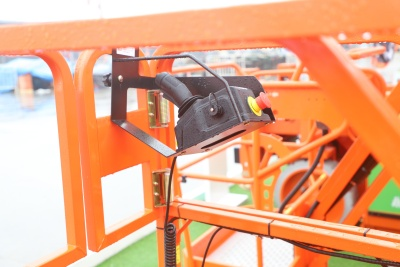In the realm of control devices, the finger joystick has long served as a trusted instrument across numerous applications. The integration of Hall effect sensors ushers in a new era, imbuing these joysticks with enhanced intelligence and precision.

How Hall Effect Sensors Work
Hall effect sensors operate on a principle discovered by Edwin Hall in 1879. When a current-carrying conductor is situated within a magnetic field perpendicular to the current's direction, a voltage difference emerges across the conductor. This voltage, referred to as the Hall voltage, correlates directly with the magnetic field's strength. In finger joysticks, Hall effect sensors are tasked with detecting the position and motion of the joystick's handle. As the handle moves, it modifies the magnetic field around the sensor, subsequently altering the Hall voltage. This voltage change is then converted into electrical signals that connected devices, like computers or control systems, can understand.
Precision and Reliability
The incorporation of Hall effect sensors in finger joysticks brings notable benefits, chief among them a high degree of precision. These sensors are sensitive enough to register the most minute joystick movements, enabling highly accurate control. This level of precision proves indispensable in applications where accuracy matters, such as robotics, where even a tiny joystick movement deviation could cause significant errors in a robot's operations. Moreover, Hall effect sensors offer exceptional reliability. Lacking moving components, they experience minimal wear and tear, outlasting traditional joystick sensors and making them well-suited for industrial environments and frequent-use scenarios.
Immunity to External Interference
Hall effect sensors provide finger joysticks with robust immunity to external interference. Unlike some traditional sensing mechanisms that can be disrupted by factors like dust, moisture, or electromagnetic fields, Hall effect sensors rely on magnetic field interactions. This characteristic allows them to maintain stable performance even in challenging environments. For instance, in outdoor construction machinery control systems, where exposure to harsh weather and electrical noise is common, joysticks equipped with Hall effect sensors continue to function accurately, ensuring uninterrupted operation.
Simplified Design and Integration
The use of Hall effect sensors streamlines the design of finger joysticks. With fewer mechanical parts required compared to traditional designs, the internal structure becomes more compact and straightforward. This simplification not only reduces the complexity of manufacturing but also makes integration into various devices more seamless. Manufacturers can more easily incorporate these joysticks into a wide range of products, from consumer electronics to industrial control panels, without having to deal with intricate mechanical alignments and calibrations.
Cost-Effectiveness in the Long Run
While the initial investment in joysticks with Hall effect sensors might seem higher, they offer significant cost savings over time. Their extended lifespan due to reduced wear and tear means fewer replacements are needed. Additionally, the minimal maintenance requirements further cut down on operational costs. In large-scale industrial setups where numerous joysticks are in use, these savings can accumulate to substantial amounts, making Hall effect sensor-equipped joysticks a financially prudent choice in the long term.
The integration of Hall effect sensors into finger joysticks represents a significant leap forward in control device technology. By addressing challenges related to precision, reliability, and environmental adaptability, while simultaneously offering design advantages and long-term cost savings, these enhanced joysticks are not merely an upgrade but a fundamental shift in how we interact with and control devices. As industries continue to seek more efficient and accurate control solutions, the high-precision finger joystick with Hall effect sensors stands ready to meet and exceed expectations, shaping the future of control interfaces in ways that are both practical and revolutionary.